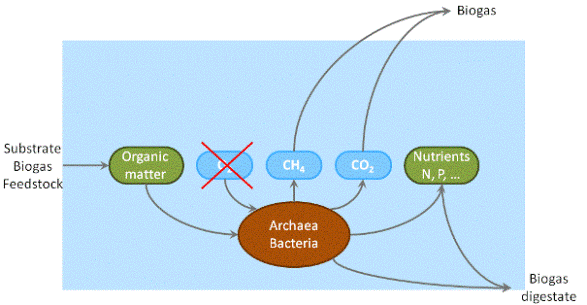Main menu
You are here
Biogas & anaerobic digestion
Biogas is a renewable energy source, a mix of methane and carbon dioxide produced in the process called Anaerobic Digestion from organic substrates. Biogas can be used to power a gas motor or a turbine driving electrical generator or it can be upgraded to biomethane and used as a biofuel or in a gas grid. Biomethane (enriched biogas) is very similar to petroleum gas that is widely used as an energy source. The transformation of waste to biogas takes place in biogas plants, where organic material is digested by microorganisms in the absence of oxygen. This series of biological processes is called anaerobic digestion. Basically all organic materials are suitable as feedstock: from organic waste (food leftovers, expired food, animal by-products, manure etc.) to agricultural by-products and energy crops.
The anaerobic digestion is carried out by microorganisms in four phases:
- Hydrolysis: the hydrolytic bacteria break down organic polymers (carbohydrates, proteins, fat) to smaller molecules, which makes the material available to other microorganisms.
- Acidogenesis: acidogenic bacteria transform the products of the hydrolysis into short chain volatile acids (acetic acid, propionic and butyric acid), ketones, alcohols, hydrogen and carbon dioxide. Acetic acid, hydrogen and carbon dioxide will be directly utilized by methanogenic bacteria. Other products will be further transformed during acetogenesis.
- Acetogenesis: acetogenic bacteria transform acidogenesis products (propionic acid, butyric acid, alcohols) into hydrogen, carbon dioxide and acetic acid.
- Methanogenesis: methanogens convert hydrogen and acetic acid to methane and carbon dioxide. Methanogens are strict anaerobes and belong to the domain Archea.





